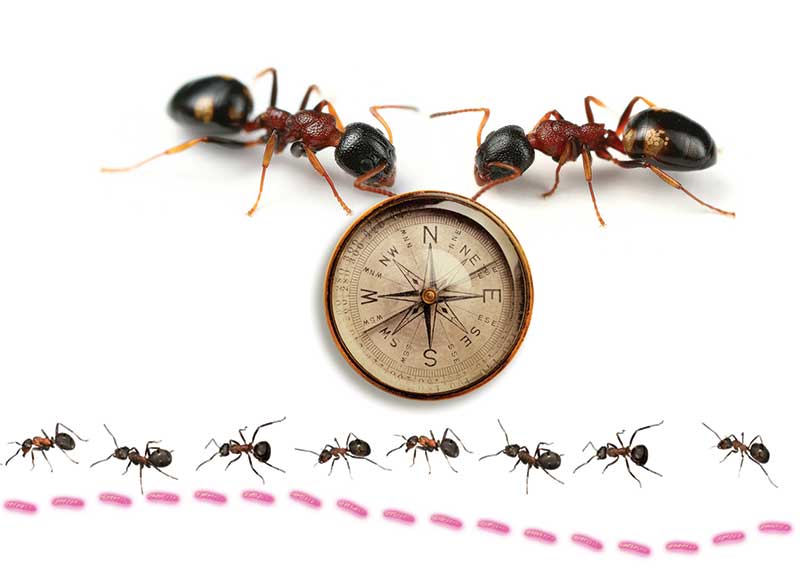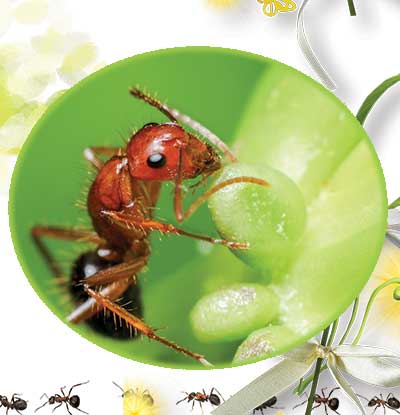We need guides to show us the way when we travel to another country or another city. In particular, when we do not know the place we are going to, we definitely must have a compass and a map. A map shows us where we are and the compass shows us which way to go. We find the way by using these tools and consulting other people so we do not get lost. Have you ever wondered how other creatures find their way? Have you ever thought how an ant seeking food in the desert returns to its nest?
 |
Black desert ants inhabiting the Mediterranean coasts of Tunisia are among those creatures who build their nests in the desert. These ants are very good at finding their way in the vast desert and getting back to their nests without the help of a compass or a map.
 |
| 1: Karıncanın besin aradığı yol; 2: Yuvaya dönüş yolu; 3: Yuva |
As the sun rises, temperatures in the desert reach up to 70oC (158oF). The ant leaves its nest to find food in the heat of the day. Frequently halting and turning around itself, it follows a devious route within an area that may be 200meters (655 feet) away from the nest. You may see this route on the map. But do not think that the ant will get lost because of these zigzags.
 |
| Küçücük canlılar olan karıncalar mikropların kendilerine zarar vereceğini bilip, ona göre önlem alırlar. Bir tür asit üretir ve mikropları etkisiz hale getirirler. Bütün bunları yapmayı karıncalara ilham eden Allah'tır. |
Once it finds a source of food, the ant follows a straight course and returns to the nest. With respect to their sizes, this journey by the ant may be compared to a man’s returning to his starting point taking a straight course after wandering 35-40 kilometers (22-25 miles) away from that point in the desert. How is it that an ant successfully performs a task that is virtually impossible for a human?
There is a special navigational system in the ant’s eyes. This system that Allah placed in the ant’s eyes is more advanced than mechanical devices that determine direction. Being able to perceive some rays that we cannot, the ant can establish directions and know where north and south are. By means of this ability, it is not difficult at all for the ant to work out where its nest is and to return to it.
Human beings have only lately become aware of the characteristics of light. However the ant has known and used a characteristic of light, which was unknown to human beings, since it was born. Certainly such a perfect structure as the eye of this ant cannot be attributed to random coincidences. The eyes of the ant must have been so since it came into existence. Otherwise the ant could not return to the nest in the desert heat and could not survive. Indeed, eyes of all desert ants have been equipped with this system since the first day they came into existence. Allah, the All-Knowing, created these eyes for them.